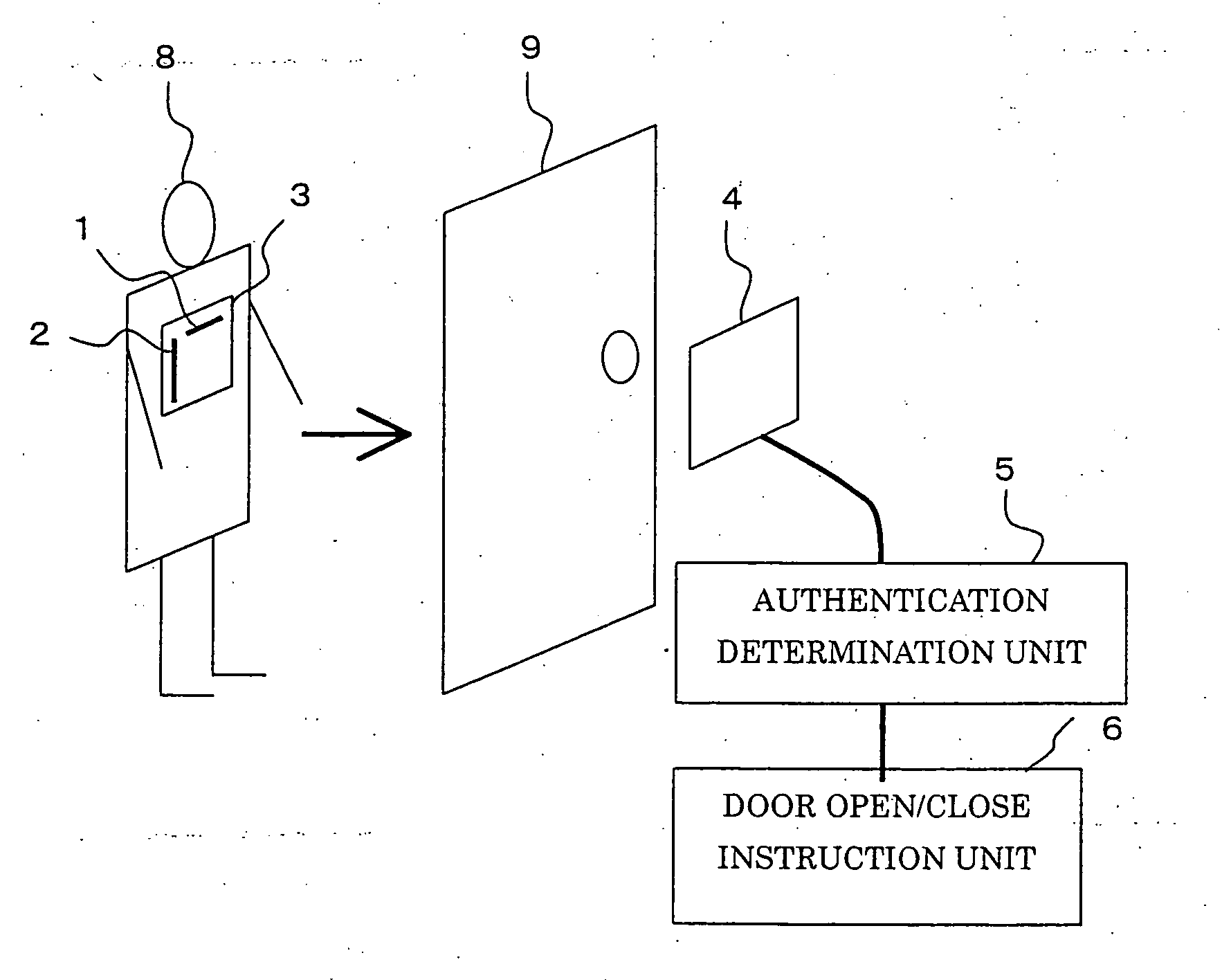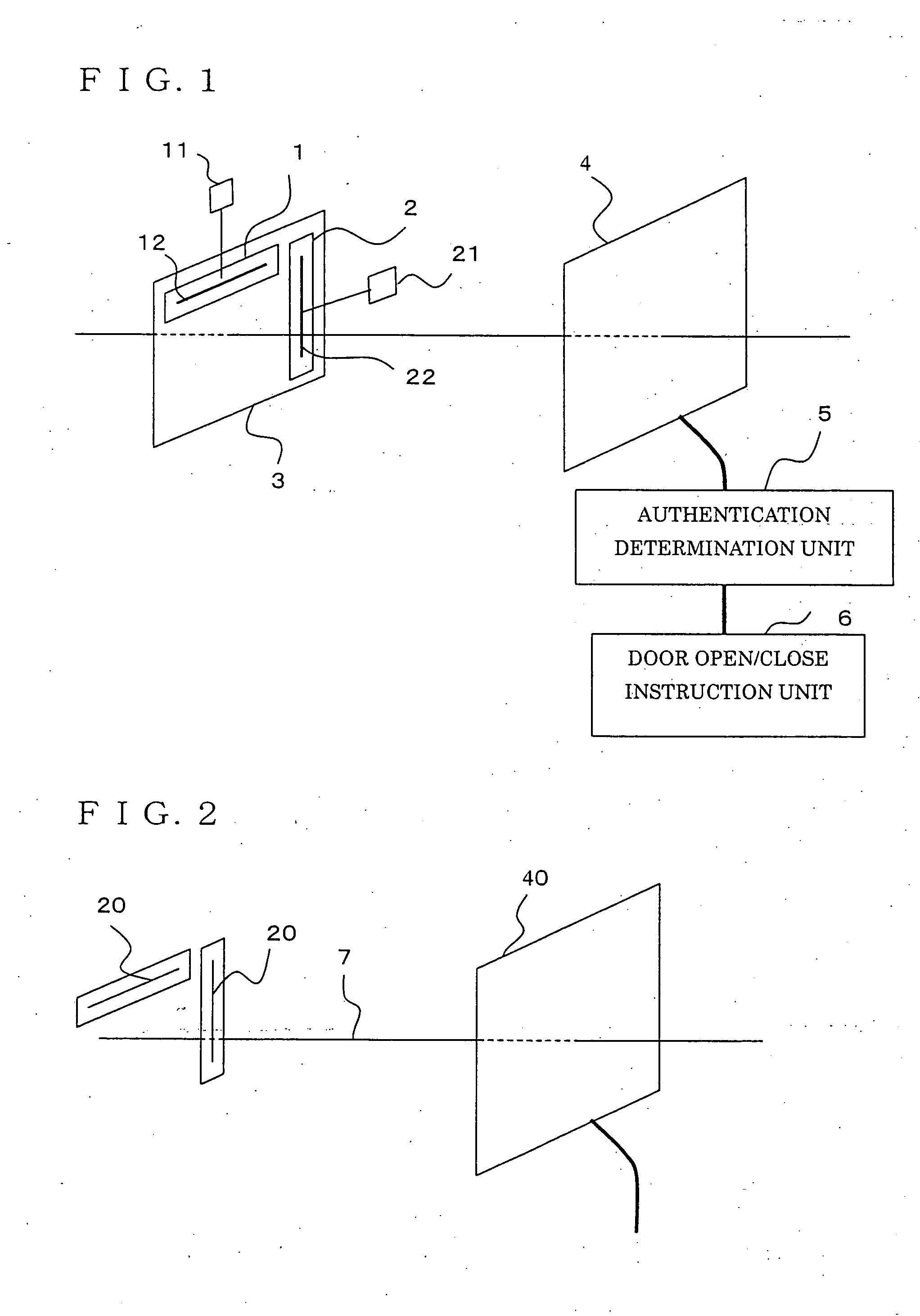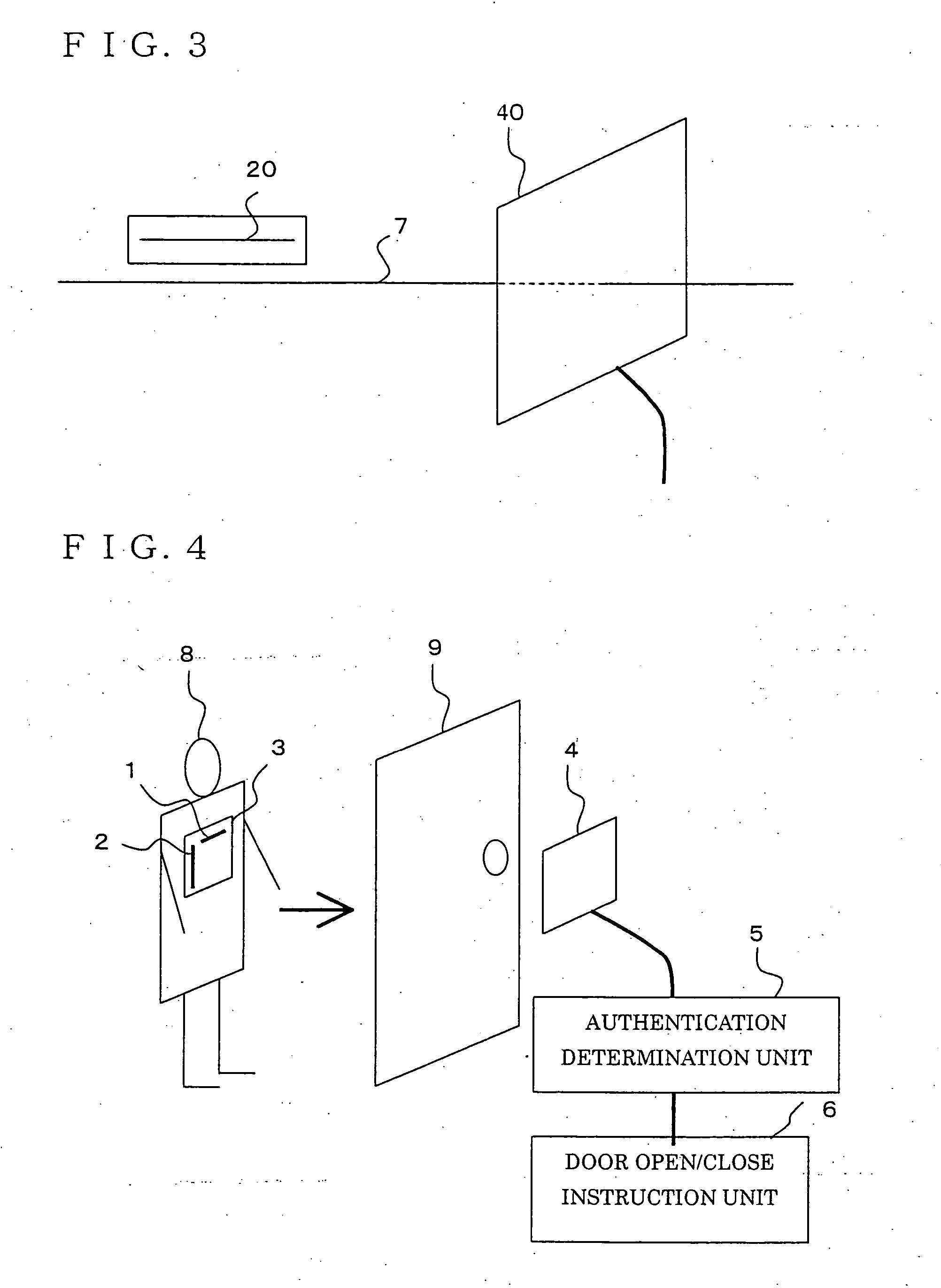User authentication system and room entry/exit management system
a user authentication and management system technology, applied in the field of user authentication systems, can solve problems such as burdening users, and achieve the effect of accurate user authentication
- Summary
- Abstract
- Description
- Claims
- Application Information
AI Technical Summary
Benefits of technology
Problems solved by technology
Method used
Image
Examples
embodiment 1
[0019]FIG. 1 is a block diagram illustrating a user authentication system according to Embodiment 1 of the present invention. Hereinafter, a case in which the user authentication system in the embodiment is used for room entry / exit management will be described, and an example in which a door is the object to which use-permission is given will be explained.
[0020] A user holds a tag plate 3, to which an RFID tag A (a first wireless tag) 1, and an RFID tag B (a second wireless tag) 2 are attached. The RFID tag A 1 and the RFID tag B 2 are composed of semiconductor chips (tag chips) 11 and 21, and tag antennas 12 and 22, respectively, and are disposed on the tag plate 3 so that the direction (axial direction) of the tag antenna 12 on the RFID tag A 1 (the first antenna) is perpendicular to the direction (axial direction) of the tag antenna 22 on the RFID tag B 2 (the second antenna). The tag plate 3 aims to keep the positional relationship between the RFID tag A 1 and the RFID tag B 2 ...
embodiment 2
[0032] In Embodiment 1, the authentication determination unit 5 gives use-permission only when the ID code transmitted from the RFID tag A 1 and the ID code transmitted from the RFID tag B 2 are received together during a predetermined period of time. Generally, because an ID code is transmitted not just one time, but constantly, the identical ID code can be received many times during a predetermined period of time. When the RFID tag and the reader antenna are close to each other, and radio waves are strong, the count of receptions of the ID code during a predetermined period of time becomes large.
[0033] In the present Embodiment 2, the tag plate 3 and the reader antenna 4 are configured similarly to those in Embodiment 1 illustrated in FIG. 1, but the configuration of an authentication determination unit 5 is different, and the determination manner is different from that in Embodiment 1. More specifically, the authentication determination unit 5 gives use-permission, only when the...
embodiment 3
[0035] In the present Embodiment 3, the tag plate 3 and the reader antenna 4 are configured similarly to those in Embodiment 1 illustrated in FIG. 1, but the configuration of an authentication determination unit 5 is different, and the determination manner is different from those in Embodiment 1 and Embodiment 2. More specifically, the authentication determination unit 5 is configured so as to count the ID code transmitted from the RFID tag A 1 and the ID code transmitted from the RFID tag B 2 every predetermined period of time, and to determine that the use is permitted, if the ID codes are received together during a predetermined period of time, and if the counts of receptions of the ID codes are not less than a predetermined count, and each ID-code reception count increases at each of predetermined intervals.
[0036] Configured as above, the use-permission is given, only when the user faces the object to use, the user is within a predetermined distance from the object to use, and ...
PUM
 Login to View More
Login to View More Abstract
Description
Claims
Application Information
 Login to View More
Login to View More - R&D
- Intellectual Property
- Life Sciences
- Materials
- Tech Scout
- Unparalleled Data Quality
- Higher Quality Content
- 60% Fewer Hallucinations
Browse by: Latest US Patents, China's latest patents, Technical Efficacy Thesaurus, Application Domain, Technology Topic, Popular Technical Reports.
© 2025 PatSnap. All rights reserved.Legal|Privacy policy|Modern Slavery Act Transparency Statement|Sitemap|About US| Contact US: help@patsnap.com



